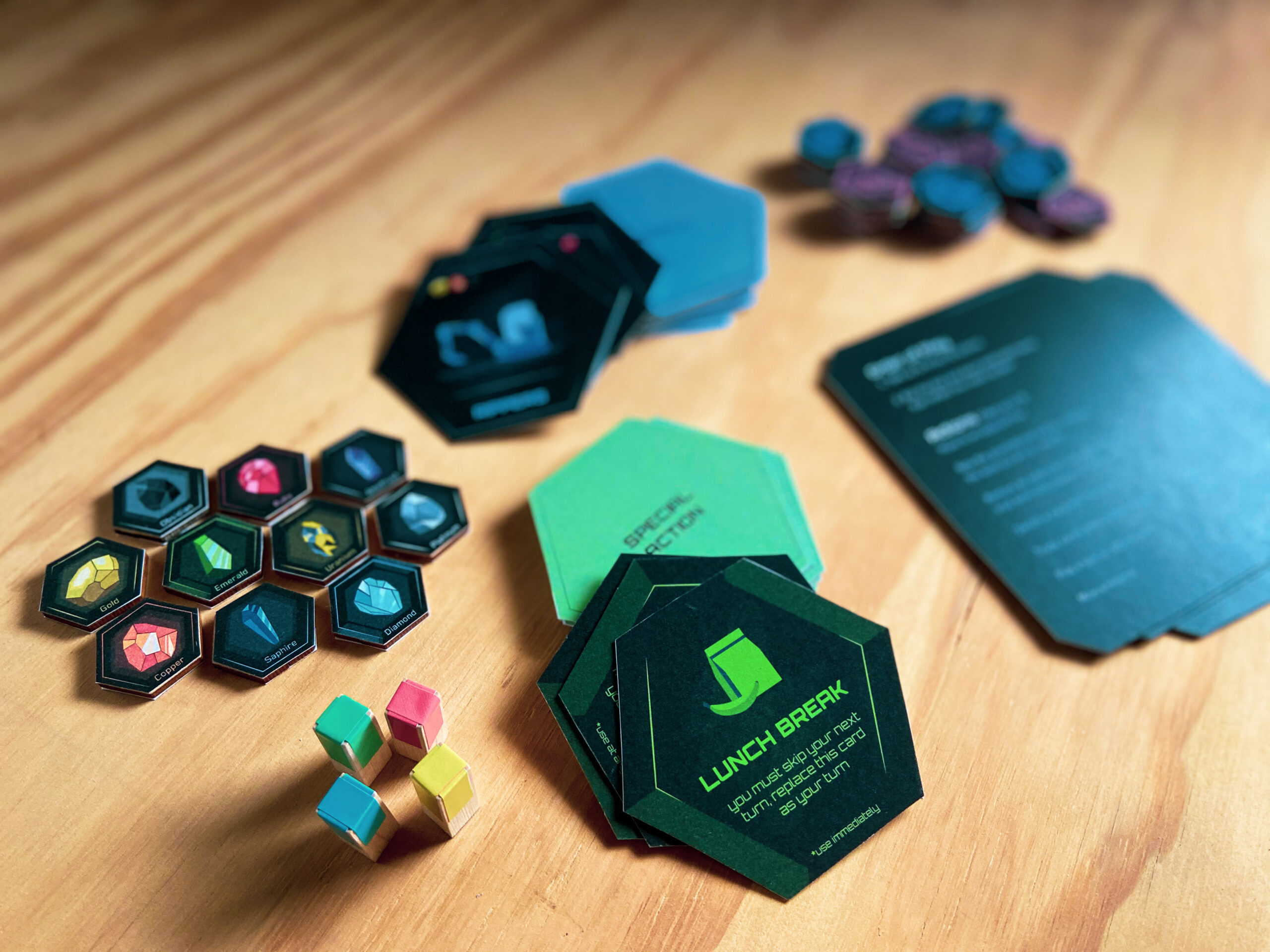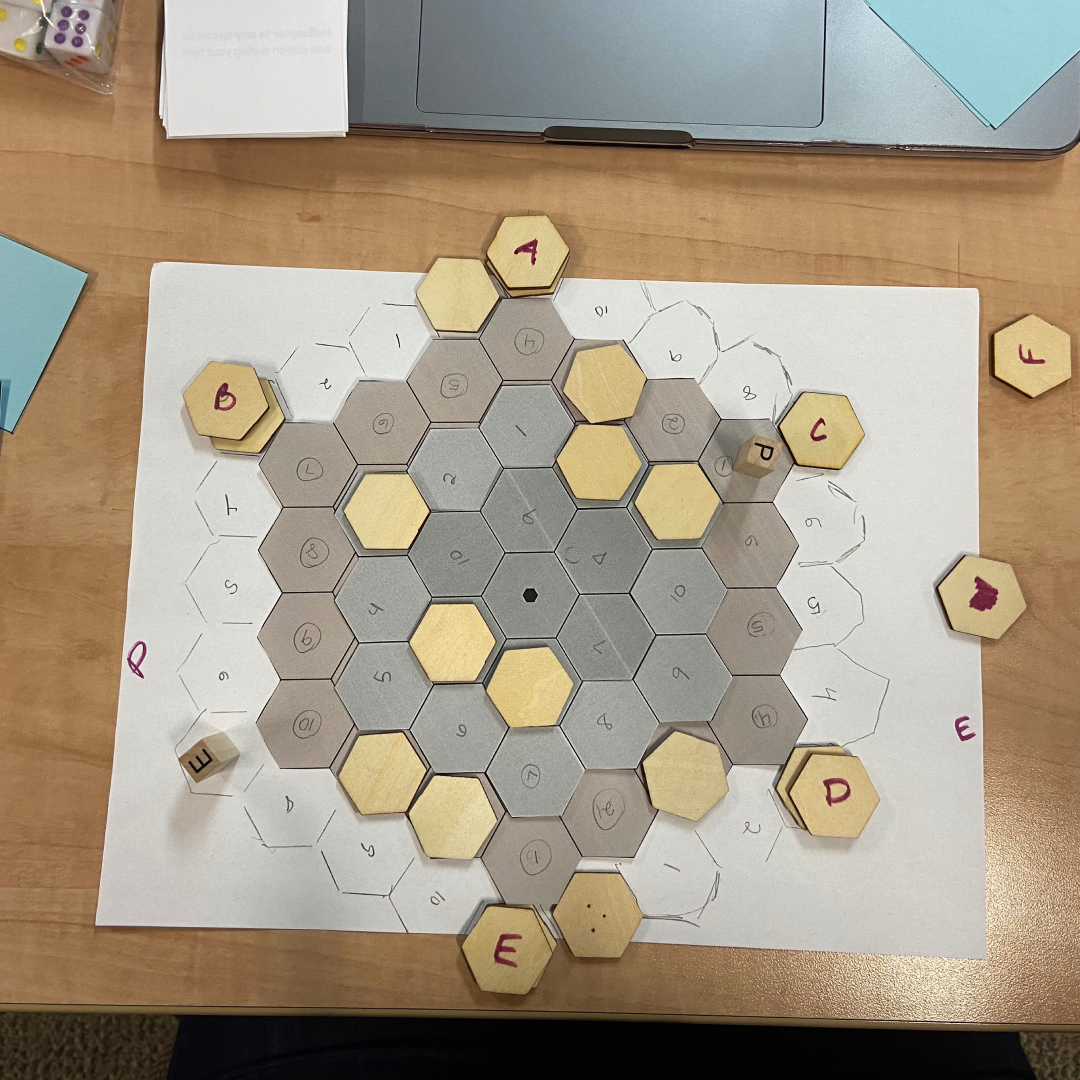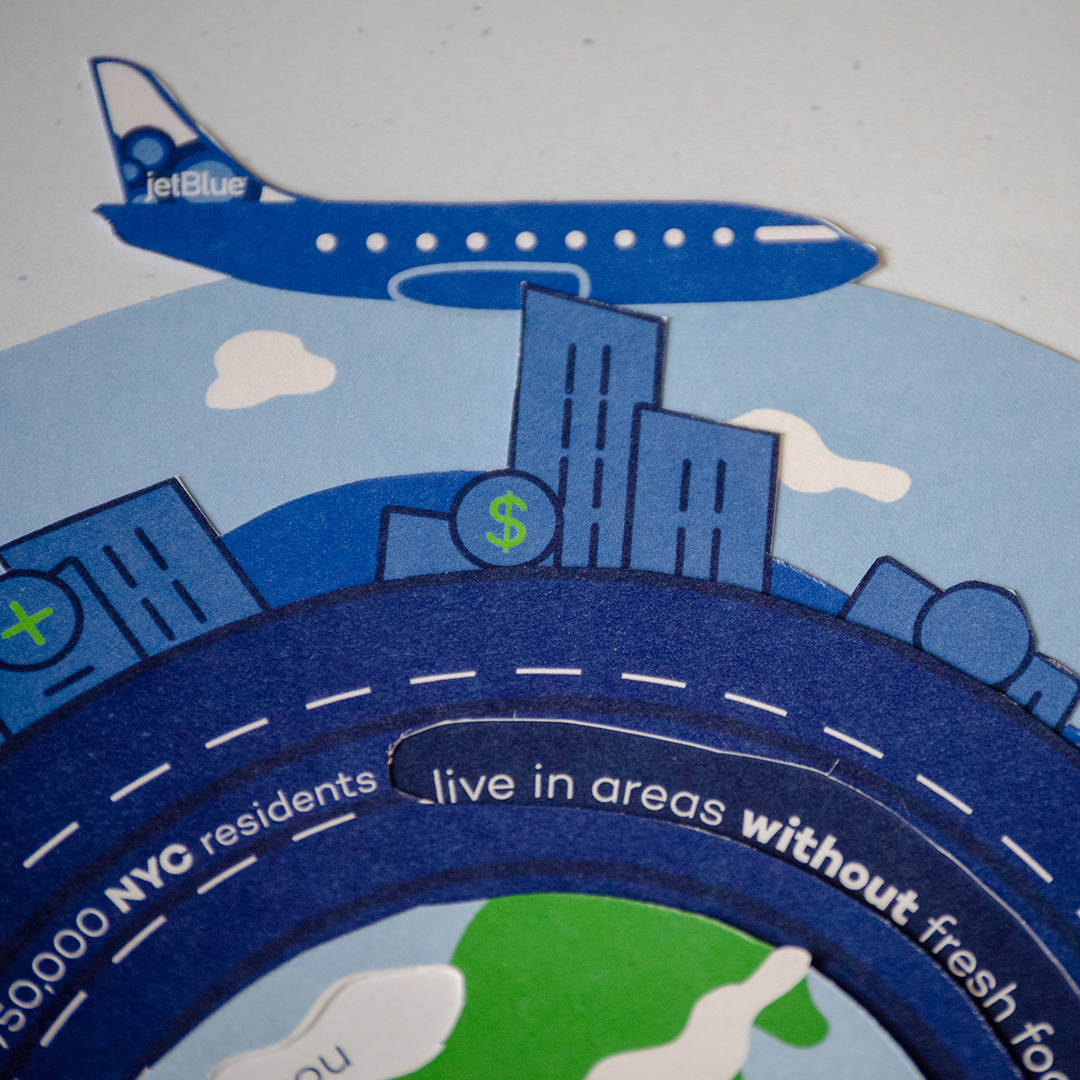Scrap Grapple
Mining the Asteroid Belt | 2-4 players | Ages 12+
an innovative game of set collection that mixes temporary alliances, hand management, and modular grid movement for unique and competitive gameplay.
Timeline:
15 weeks, Spring 2020
Role:
Concept development, UX, Visual Design
Awards:
RIT College of Art + Design Materials Award Scholarship 2020
The Challenge
experimenting with UX design outside of the screen
While exploring options for what my senior capstone could be, I realized I wanted to continue to persue my interest in UX/UI but challenge myself to explore it in a different way than I had been; outside the screen. So I did a large amount of research about the processes behind, Industrial Design, Game Design, and Product Design. I then combined those processes with my UX background to try and build a board game with a more memorable and powerful experience for players. I started by asking myself the question: How might we bridge the UX divide between digital and physical experiences?
The Prototype
a 3 dimensional board game that engages players and allows them to experience a concept they've never experienced before; outspace.
Theme + Narrative + Object
With the increasing demand for dwindling natural resources on earth, what seemed to be a harebrained idea meant for science fiction has ended up being crucial to our future as a species. Spectrographic analysis of the asteroids in the Asteroid Belt between Mars and Jupiter show that there is tons of mineral weath just floating out there waiting for someone with a rocket, a spacesuit, and a drill to go get it. In a race to make history, you are working against your rival asteroid miners to mine the most minerals form the Asteroid Belt. They player to mine the most minerals wins the game.








Modular Grid
the board of the game is made up of three levels, two of which rotate and one that serves as the base. Players are able to move around the hexagonal grid during their turn, and they can take advantage of the rotation of the levels to get ahead with just a little extra strategic thinking. This means the game is easy to play but advanced players can make the experience more interesting.


How to Play


Understanding the User/Player
Deciding to sit down and create a board game is ambitious to say the least. I had to start somewhere, so I chose to start where I normally begin: with the users. I needed to first understand who I was designing for. Because the board game community is so broad, I used a combination of surveys, interviews, and published information to develop personas and understand psychographics.
User Research Key Insights
Based on the people who chose to take a survey about board games, most are ages 19-30
The idea number of players if 2-4, and the ideal amount of playing time is 30-60 minutes
People tend to enjoy abstract/strategy games and cooperative games more than other types of games
Players evaluate their enjoyment of a game based on its functionality, the human interaction involved in the game, the simplicity of learning, and finally the visuals of the game
There are four types of board game players - this will help decide the mechanics for the game, since each has their own motivation




Understanding the Process

Finding the similarities

Documenting the Purpose + Understanding How to Measure the Experience
*When it came time to user test, these were the things I was looking at.

Project Timeline + Schedule

*Initially my goal was to create a board game that had a digital component to it - however I found this was making the process too complex–especially with the COVID-19 Pandemic taking place–so I let that part of the project go midway through. I was also unable to finish the marketing plan due to losing time because of the change in the way the university was run.
Ideation + Brainstorming







Board Design Sketches






Component Sketches






Visual Exploration + Moodboards




Prototype 1 - paper

Prototype 2 - paper

Prototype 3 - paper

Prototype 4 - foamcore

Prototype 5 - wood

Prototype 6 - luan board

Play Testing
Similar to user testing, I was play testing the game throughout the entire process of building it. I adjusted the mechanics and the theme several times as I learned what players liked and disliked about the game as well as saw where the game was lacking. This was an extensive process and all the information regarding the process is in the play testing process deck.
Project Takeaways
Creating a board game is more challenging than it looks. Through this, I learned about what motivates me as a designer, and I learned that I really like taking a step back from the computer to think and write it all out.
I also learned that it's important to understand how to measure whether or not an experience is successful and aligns with your goals. Finally, I realized that understanding the player types and user types drives the design for you, so it's important to lean on that information as much as you can.
Thinking Bigger
My work on this project was interrupted by the COVID-19 Pandemic. This meant a large amount of the resources I thought I had at the begining of the project were not longer available toward the middle of the process. This meant I had to change my plans. I was still able to finish the project, just not to the level I had hoped. If I had continued to have the on-campus resources at RIT I would've liked tp 3D print the components, and do some larger play testing of the final prototype at ImagineRIT 2020. I would still like to do these things once it is safe to as this game is still very much a work in progress. This was one of the most fun things I've ever made and I learned a lot.
A huge thank you to all the people who helped me play test, and took the time to help me develop the game. I would also like to specifically thank my Dad for cutting the final prototype in his woodshop.


JetBlue: Make a MoveEmpowering humans to help improve mobility in transit deserts with an interactive ad campaign

NYS Balloon FestivalReimagining the largest balloon festival in NYS

Rethinking RecreationMotivating young people to be active through digital recreation

ServiceNow InternshipMaking work life more like real life through mobile experiences and emerging technology

psstRethinking plant care using Augmented Reality